
Welcome to the fourth part of our Chronology of Chesterfield’s history. Here we cover the period from 1900 to 1999.
We last revised this page in March 2023 but are currently working on a much enhanced version. We hope to add much more detail, particularly for the period after the 1960s.
Links to our other chronology pages are below.
- To the introduction.
- 1 – Early History to 1599 (This section has been thoroughly revised and was first published in July 2023).
- 2 – 1600 to 1799 (This section was last revised in March 2023 – but we are working on a completely new revision to be published in the next few months).
- 3 – 1800 to 1899 (This section was last revised in March 2023 – but we are are working on a completely new revision, hopefully to be published soon).
- 5 – 2000 onwards. (This section is not currently populated with much information. At some stage in the future we hope to add more recent events from the year 2000 onwards, but we do not currently have work in progress on this).
Sources used in compiling our chronology are listed in the introduction

Chronology of Chesterfield 4: 1900 to 1999
1900 New Cattle Market established by the River Hipper
1900 Ryland works near the Parish Church destroyed by fire [The remains of this are presently (2023) a night club].
1901 Census 27,185 inhabitants 5282 houses.
1901 Electric street lighting was introduced in Chesterfield, following opening (October 1) of the corporation’s electricity works on Chatsworth Road.
1901 Lord Roberts delivered his ‘lonely furrow’ speech to a packed meeting at Chesterfield.
1901 Central Schools opened, including swimming baths in the basement.
1901 EDWARD VII
1902 East Derbyshire Field Club established.
1903 Chesterfield Education Committee established.
1904 The horse-drawn trams in Chesterfield ended. Electrically powered trams substituted.
1904 Penmore Isolation Hospital erected at Hasland.
1905 Council’s first meeting in the newly converted council chamber in Stephenson Memorial Hall.
1905 Success of tunnelling shield made by Messrs Markham & Co. in the construction of the Rotherhithe Tunnel.
1905 The parish church lit by electricity.
1905 Foundation stone laid of new Mount Zion Primitive Methodist Chapel, Brampton. It opened on 18 October 1906.
1906 James Haslam elected as M.P. for Chesterfield.
1906 Electrically driven large cantilever crane completed at Markham works. This was a feature of the area for many years.
1906 St Patrick, a daughter mission to the Catholic Church of the Annunciation set up in New Whittington.
1907 William Harvey elected as M.P. for Northeast Derbyshire after a by-election.
1907 The Lancashire Derbyshire and East Coast Railway taken over by the Great Central Railway.
1907 ‘Eventide Homes’ erected by Edward Eastwood, for ‘eight aged women with small incomes’. [Chesterfield College now stands on part of the site].
1907 – July 31 death of Joseph Hatton. [He was formerly a well-known journalist who had been educated at Chesterfield. He had also written some novels based on the area. He is now largely forgotten].
1908 New organ at Holywell Cross Primitive Methodist Church opened and dedicated (March 18th).
1908 National Mouse Show at Chesterfield. [!]
1908 Death of William Oliver former managing director of the Broad Oaks Ironworks. (June 29). [These works were those purchased by CP Markham out of liquidation].
1908 Nurses home at Chesterfield hospital opened.
1909 New skating rink at Chesterfield opened on West Bars.
GEORGE V
1910 The Palace, Burlington Street, formerly a printing house of the Derbyshire Courier, opens as a picture house and theatre, with accommodation for 500.
1910 Boundaries of Chesterfield extended take in parts of Brampton, Walton, Calow and Hasland. Area 2643 acres.
1910 River Hipper straightened south of Low Pavement.
1910 Alderman CP Markham announces his intention to demolish the ‘Dog Kennels’ (notorious slum housing) and create Markham Road.
1910 Markham and Barnes wards opened at Chesterfield hospital along with provision of open air treatment of children.
1910 Serious fire at Broad Oaks works.
1910 (November 9) Further extension of the borough to include parts of the Urban Districts of Brampton and Walton and Newbold and Dunston, and parts of the townships of Calow and Hasland.
1910 Stephenson Memorial Hall assembly room converted into a theatre.
1910 With the exception of the west gallery, all galleries removed in the parish church. Roof renovated. Cost of renovation in 1905-10 £2,460.
1911 Labour exchange opened.
1911 Census 37,429 inhabitants 7609 houses.
1911 Merryweather motor fire engine purchased by the corporation – the first in Derbyshire.
1911 Meshe David Osinsky opened his shop on Holywell Street founding Montagu Burton.
1911 National Railway strike. Riot at Chesterfield station (August 19).
1911 (December 27) Fire at the Palace Theatre results in the death of five girls.
1911 (September 11) New Girls High School building opened. Control passes to Derbyshire County Council.
1911 Chesterfield Brewery Company purchase the business of TP Wood’s wine and spirit merchants.
1912 Dog Kennels demolished to make way for Markham Road.
1912 Eastwood Park, Hasland, with mansion and grounds of just under 15 acres, presented to the borough by Alderman G Eastwood. A village hall was subsequently erected in the park by Bernard C Lucas.
Interlude: industry in 1913
Courtesy of the ‘Chesterfield yearbook and directory’ (published in 1913) is a brief (and by no means complete) overview of industry in Chesterfield just before the First World War.
IMPORTANT WORKS.
Messrs. Robinson and Sons, Wheatbridge Mills. Manufacturers of cardboard boxes and surgical dressings, employing some 1,600 hands. These works are situated in the West Ward. The Wheatbridge Works, for the manufacture of bandages, lints, and medicated dressings, and round and square boxes, are the largest of their class in the country. At Holme Brook Works, cardboard boxes and cases of all descriptions are manufactured. At Bump Mill Works, cotton lint and bleaching is carried on. Furnace Hill Works are now used for cleaning cotton wool, etc. Garden Pond Works for bleaching; and Walton Mill for various purposes.
Markham and Co., Broad Oaks. Engineers and founders. Large business in iron and steel construction. Probably the most important firm in the building of colliery winding engines in England. The works cover a large area by the River Rother, and the large electric crane is one of the engineering sights of the town. Principal: Ald. C. P. Markham. Employees number over 1,000.
Plowright’s Works, West Ward. Extensive and growing concern. Colliery machinery of all descriptions are manufactured. About 300 hands.
Chesterfield Tube Co., Derby Road. These works cover many acres and some of the most ingenious work of its class is produced here. The works have been extended several times during its existence. About 300 hands. The specialities are weldless steel tubes.
Bryan Donkin and Co., Derby Road. Under the energetic management of Councillor Clark, these works have been extended several times. Manufacturers: Gas plants, engines, valves and fans, electric motors and appliances are made here on a large scale. About 200 hands.
Potteries. These are amongst the oldest industries of the neighbourhood and employ many hands in their workings. Situated chiefly at Brampton and Whittington Moor (see Trade Directory).
Furniture. Eyre and Sons and J. White and Sons, cabinet manufacturers, are situated in Tapton Lane, and are of a very extensive character.
Tanners. The works of J. Clayton and Sons are very extensive. These works have been established a good number of years and leather is sent from this tannery to all parts of the world. The firm were pioneers in chrome tanning. The Johnston Leather Company’s processes for the production of pliable motor leather and waterproof sole leather are carried on here.
Railway Wagon Works, Tapton. Established by the late Ald. Edward Eastwood. Close beside the Midland Railway main line. Principal: Ald. G. A. Eastwood.
Coal Mines. Chesterfield is on the fringe of the North-East and Mid Derbyshire coalfields and many of the greatest colliery undertakings are situated within a few miles of the Borough. The nearest collieries are:
Grassmoor Collieries 2 miles; Bolsover Collieries 5 miles; Holmewood Collieries 6 miles; Bond’s Main 6 miles; Clay Cross Collieries 5 miles; Renishaw Park Collieries 6 miles; Sheepbridge Coal & Iron Co. 3 miles; Staveley Coal & Iron Co. 5 miles; Creswell Colliery 7 miles.
Iron Works, etc. Staveley Coal and Iron Company, Old Works; Staveley Coal and Iron Co., Devonshire Works; Sheepbridge Coal and Iron Co.; Clay Cross Iron Works; and Renishaw Iron Works are all within a six mile radius of Chesterfield.
Building Stone. Stone of a good quality is quarried within a few miles of the Borough. The chief quarries are at Ashover, Alton, Stannage, Freebirch, and Loads.
Boots and Shoes. The works of Messrs. Dronfield, in Hipper Street, are well equipped and a good output is maintained here. Messrs. Harrison and Sons’ factory is in Silkmill Yard.
From the directory part of the yearbook (p. 154) are listed the potteries
Barker Potteries—Chatsworth. Rd.; Briddon Potteries—Chatsworth Rd.; Knowles & Son—Chatsworth Rd.; London Potteries—Chatsworth Rd.; Oldfield Potteries—Chatsworth Rd.; Pearson & Co., Ltd.—Whittington Moor; Wright & Sons—Wheatbridge Road.
1913 Eastwood Park opened at Hasland. It included a fountain from Ringwood Hall, presented by CP Markham [The fountain is still in Hasland Park, despite being moved to Chesterfield town centre in the 1980s].
1913 Clayton Tannery destroyed by fire.
1913 Rebuilt Christ Church re-consecrated by the Bishop of Southwell – north and south aisles having been added by Rollinson & Sons, architects, of Chesterfield.
1914 Chesterfield Housing Association formed.
1914 Improvement Act passed leading to major street improvements.
1914 (18 April) Municipal bus services to Hasland and Clay Cross begin, followed shortly afterwards by a route to Brimington.
1914 (June 11) Chesterfield parish church closed to visitors on account of violent protests by suffragettes burning churches in the country. Removal of plaster from the walls of the church completed (November).
1914 Tontine Road opened.
1914 Whittington Moor boy, Joe Davis, wins amateur billiards championship of Chesterfield and District.
1914 County police courthouse and petty session court opened on Brimington Road.
1914 (11 April) Christ Church Stonegravels created a separate parish from Holy Trinity.
1914 New Tuberculosis Sanatorium at Boythorpe commenced. [This formed the basis of Walton Hospital].
1914 Opening of Whittington and Newbold sewage works.
1914 Village Hall opened in Eastwood Park, Hasland
1915 Ald CP Markham’s gift of open air swimming baths [Chatsworth Road].
1915 Motor ambulance presented to the town by Ald GA Eastwood.
1915 Statues of J Haslam MP and WE Harvey MP, founders of the Derbyshire Miners’ Association, unveiled outside the Saltergate HQ.
1915 Chesterfield Water Board decide to spend £40,000 on new waterworks.
1915 Chesterfield Town Football Club wound up.
1915 Village hall and rifle range opened at Whittington. Gift of the Swanwick family in memo pry of late Lieut RK Swanwick.
1915 The Mayor announced to a town council meeting that 7,674 recruits had enlisted up to 9 November.
1916 Fire at corporation electricity works [Chatsworth Road]. One double deck tramcar completely destroyed, several others damaged.
1916 Basil Ward opened at the hospital in memory of Sir Arthur Basil Markham [Brother of CP Markham, industrialist and MP for Mansfield]
1916 Eyres’ Hardware Department on Stephenson Place destroyed by fire.
1916 Fire at Electric Shot-Firing Company, Newbold Moor.
1916 Chesterfield adopts a town planning scheme said to be one of the first in the country.
1917 Angel Hotel seriously damaged by fire [Situated on High Street].
1917 Ten day commercial & industrial exhibition to raise funds for the hospital.
1918 New cemetery opened at Boythorpe.
1918 Extensions to corporation’s electricity works formally opened.
1918 Record sale of property at Chesterfield – estate of the late Bernard Lucas – at Grassmoor, Hasland and Calow. Realised £25,595.
1918 Boring for oil in the district officially inaugurated at Hardstoft (October 15).
1918 Influenza rife in the district. Death rate in Chesterfield during the week 16 November was 76 – including 39 from flu and 10 from pneumonia.
1918 (1 December) Trees planted in burial ground at Elder Yard Chapel in commemoration of the signing of the armistice.
1919 Housing Act. Plans for first council houses in Chesterfield.
1919 Chesterfield and North Derbyshire Hospital granted permission to use ‘Royal’ in its title.
1919 Ald GA Eastwood presents three acres of land at Calow for the Eastwood Recreation Ground.[Formerly opened 3 August 1920].
1919 Calvary war memorial unveiled in church yard at parish church.
1919 Rugby Club founded.
1920 Brearley Park, New Whittington, opened.
1920 (November 9) Boundaries extended to take in Newbold, Tapton and Whittington and parts of Brampton, Walton and Brimington. 8484 acres.
1920 First two council houses completed on St Augustine’s Road in July 1920.
1920 Sale of Major Hunloke’s Wingerworth estate – realised £177,000. Later announced that Wingerworth Hall was not sold and would be demolished.
1920 Announced that British Thomson-Houston Co. intended to build works at Chesterfield.
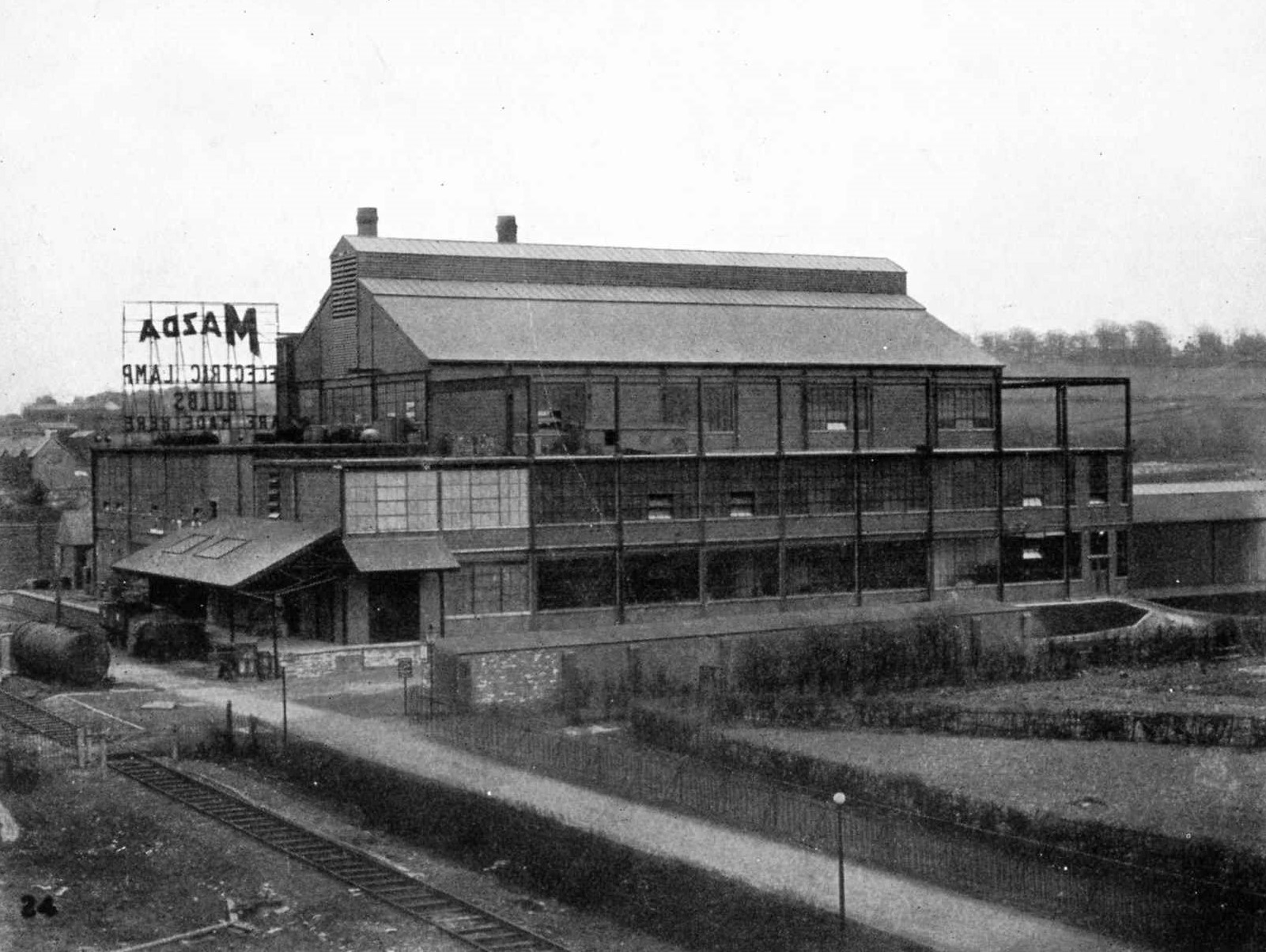
1920 Chesterfield Gas and Water Board take over the production of gas (9 November).
1920 Scheme first discussed for an arterial road connecting Chesterfield with Staveley – using the bed of the disused Chesterfield Canal. [The issue appears to have been initially championed by CP Markham and was the first time that the long-running saga of a bypass for Brimington and Staveley appears to have been raised].
1921 The works of the private Whittington gas undertaking (bottom of Whittington Hill) are taken over by the Chesterfield Gas and Water Board. [The private gas undertaking had provided gas for Whittington and Brimington].
1921 Census 61,232 inhabitants 12,271 houses.
1921 Roman Catholic Church of the Annunciation renovated.
1921 Gift to the parish church of a rare processional cross by Major Philip Hunloke – believed to be 15th or 16th century and latterly in the private chapel of Wingerworth hall.
1922 Wilfred Edmunds Ltd publishers of the Derbyshire Times purchased the Derbyshire Courier.
1922 Chesterfield Municipal Maternity Home and children’s hospital opened. [This hospital was in the grounds of the Royal hospital. It later became the medial block of that hospital].
1922 Severe flooding Chatsworth Road.
1922 New outpatient block at Chesterfield and North Derbyshire Royal Hospital opened. [This fronted Holywell Street].
1922 Organ renovated and reopened after enlargement at Chesterfield parish church.
1923 Institute Newbold Road enlarged at a cost of £3,000.
1923 The parish church’s architect reports that the spire is in serious condition, caused by general age deterioration and ‘Death Watch’ beetle in the woodwork. Restoration works are instituted and completed in 1926 at a cost of £3,372.
1923 Chesterfield and District Rugby Club formed as a separate organisation.
1924 Last race run on Chesterfield Racecourse.
1924 Building of Chesterfield Technical College commenced.
1924 Gas works reconstructed in stages – final completion 1930.
1924 CP Markham’s gift of £10,000 to Chesterfield Royal Hospital.
1925 Tapton Estate, including Tapton House, given by Charles Paxton Markham to the town.
1925 Violet Markham is first woman to be elected to the borough council.
1926 Staveley approaches Chesterfield with a view to amalgamation. [The then parish council were frustrated with slow housing and sanitary improvements by Chesterfield Rural District Council. The plans came to nothing, particularly after the death of CP Markham and an unsuccessful referendum in Staveley].
1926 Death of Charles Paxton Markham (aged 61) regarded by many as the ‘uncrowned king of Chesterfield’ due to his association with industry, commerce, politics and sanitary and housing improvements.
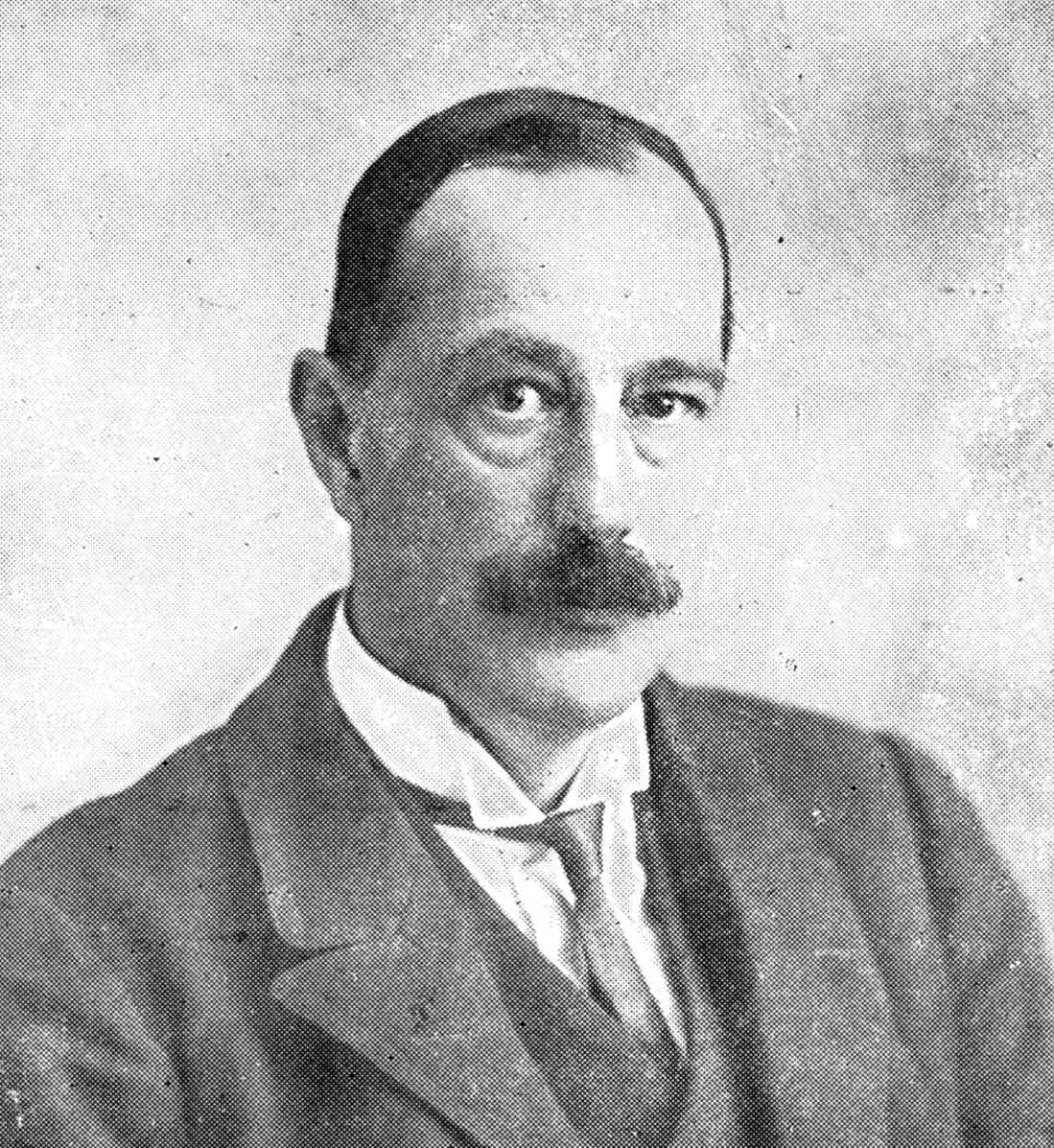
1926 Automatic telephone exchange opened. First in the county.
1926 Chesterfield Miners’ Welfare Centre opens.
1926 The Thornfield estate, Stonegravels is purchased by the corporation on which new premises for the trolley bus and motor bus fleet and for transport offices are constructed. The existing premises based on the Chatsworth Road tram-sheds are outdated and cramped.
1926 New sewage treatment works opened by the corporation at Old Whittington, adjacent to the river Rother.
1926 Ecclesiastical district of Saint Augustines constituted (9 November).
1927 New refuse disposal works opened [at Stonegravels].
1927 First trolley bus service between Market Place station and Brampton terminus. Last tram to Whittington. Later that year the new corporation Central Omnibus Station opens on Vicar Lane.
1927 (12 October) Chesterfield’s new technical college opens on Infirmary Road. Land for and cost of building (£27,000) given by Ald George Albert Eastwood. Sum of £12,000 towards equipment contributed from the Miners’ Welfare Fund.
1927 Joe Davis wins professional snooker championship.
1927 New Beetwell Street opened.
1927 Library in the Stephenson Memorial Hall completely reorganised and remodelled when the Carnegie UK Trust makes a grant of £1,700 for replenishment of the the book-stock. Open access system introduced.
1927 (July 7) New diocese of Derby formed.
1927 Derby Road Wesleyan Methodist Church opened at Jawbones Hill.
1927 Architect to the parish church advises that the bells should only be chimed not rung.
1928 Joe Davis wins professional billiards championship.
1928 New Chesterfield Baptist Church opens in Cross Street.
1928 New wing opened at Chesterfield Grammar School.
1928 Violet Markham School for girls opens.
1928 Trolleybus service extended to New Whittington.
1928 Largest gas holder at Chesterfield Corporation gas works constructed – holding 2 million cubic feet of coal gas as a maximum.
1929 Chesterfield College of Art opened.
1929 Bradbury Hall, for the use of employees of Robinsons, opens on Chatsworth Road.
1929 A regional planning scheme is adopted. [The so-called Adshead report – after its author. In reality progress on implementing its plans is slow and many never come to fruition].
1929 Foundation stone laid of the new SS Augustine Church by the Duke of Devonshire. An old iron church building in use was pushed back 50 yards and tacked onto the new structure.
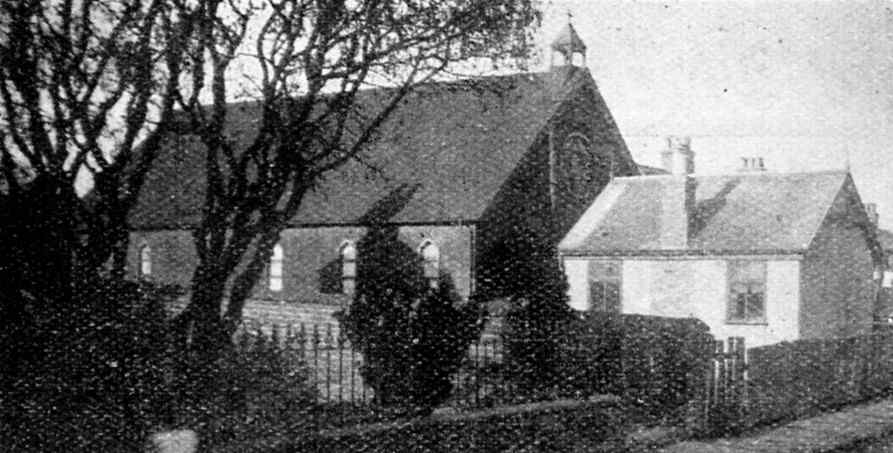
1930 William Rhodes Infants and Junior, Highfield Hall, Peter Webster schools officially opened.
1930 New Girl Guides’ headquarters opened in Cross Street.
1930 First part SS Augustines new parish church, Derby Road, consecrated. The building serves a new parish formed from parts of the parishes of St Mary and All Saints and St Thomas, Brampton. Building cost about £7,000 – designed by HL Hicks of Newcastle-on-Tyne. The church is dedicated to two saints of the same name.
1930 Parish Hall of St James in Vicar Lane extended.
1930 Replacing an earlier building, a new Catholic Senior Mixed Modern school, on Cross Street was opened. Provided by the Catholic church at a cost of £9,280, with £700 for equipment from the local education authority.
1930 Church of the Holy Family, Derby Road built following generosity of Martin Nolan. His adjacent bungalow is later converted into the presbytery. The Holy Family became a stand-alone parish in 1942.
1931 Census 64,146 inhabitants, 14,904 houses. Number of electors 50,076.
1931 Tapton House School opened as a ‘modern selective school’.
1931 William Rhodes Senior School opened.

1931 Rose Hill estate purchased for municipal buildings [the Town Hall and the Shentall Memorial Gardens are all situated on it].
1931 Joint water board established by Chesterfield Corporation and Bolsover.
1931 Double decker motor (petrol) and trolley buses purchased by the corporation.
1931 Murphy Ward at Chesterfield Royal Hospital opened.
1931 Borough police comprised 71 – chief constable, chief inspector, three inspectors, eight sergeants and 58 constables. In addition one inspector, one sergeant and one constable are wholly employed on fire bridgate duties. One inspector and one constable act as weights and measures inspectors. One police woman is also employed.
1932 Elder Way opened.
1932 Skating rink destroyed by fire.
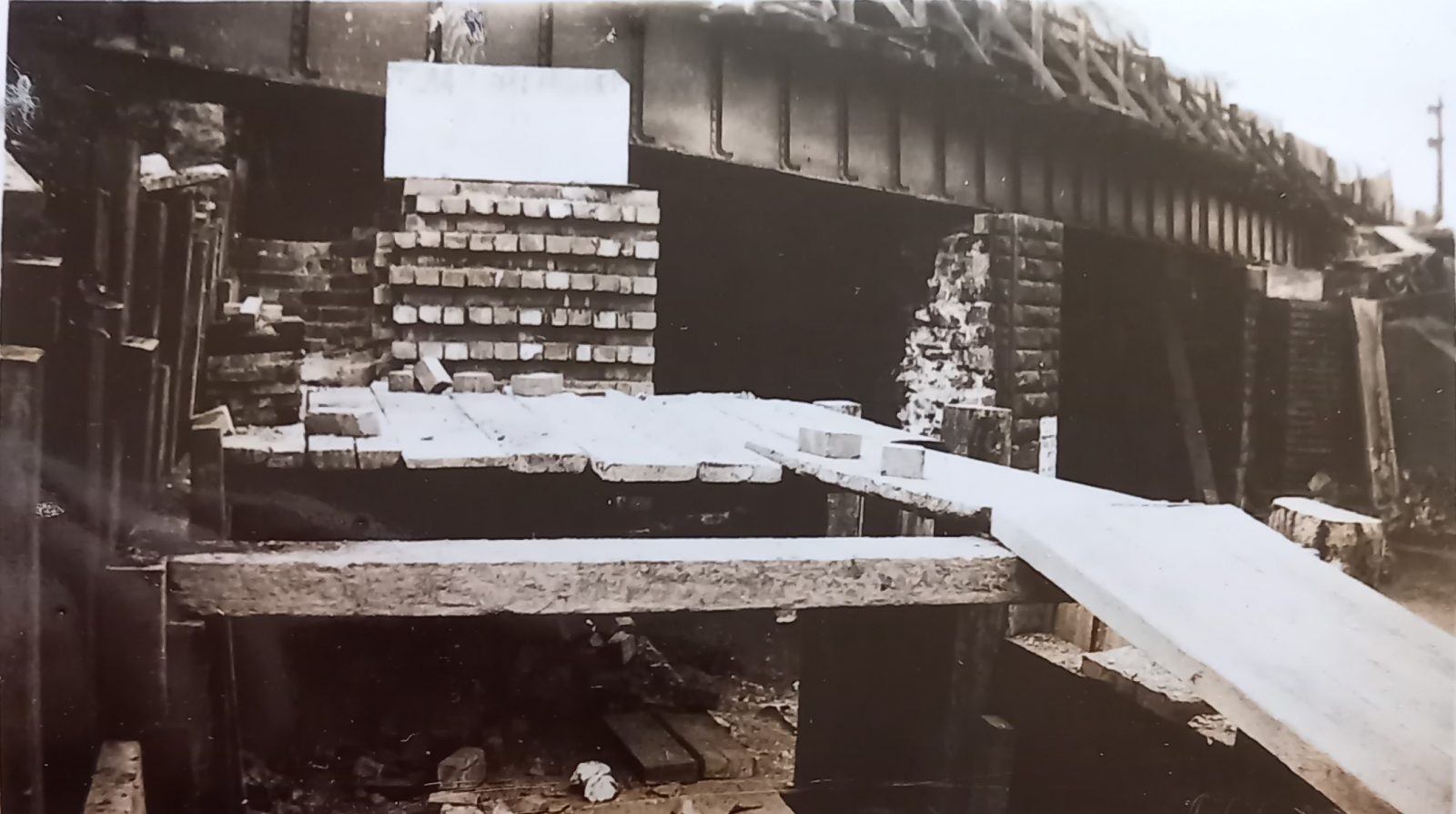
1932 Horns Bridge Midland Railway line reconstructed.
1932 Hasland Hall opened as modern senior mixed school.
1932 New church at Hollingwood opened – converted from former agricultural buildings.
1932 Faculty obtained for removal of gravestones from Chesterfield parish church yard and adjustment of boundaries.
1933 First traffic lights installed at Walton Road, Markham Road, Park Road/West Bars and Holywell Cross.
1933 Chesterfield gas filled bus successful trail run to Rotherham. [The trial was promoted by the Chesterfield Tube Company and Bryan Donkin Ltd as a way of using coal gas. The experiment appears to have petered out].
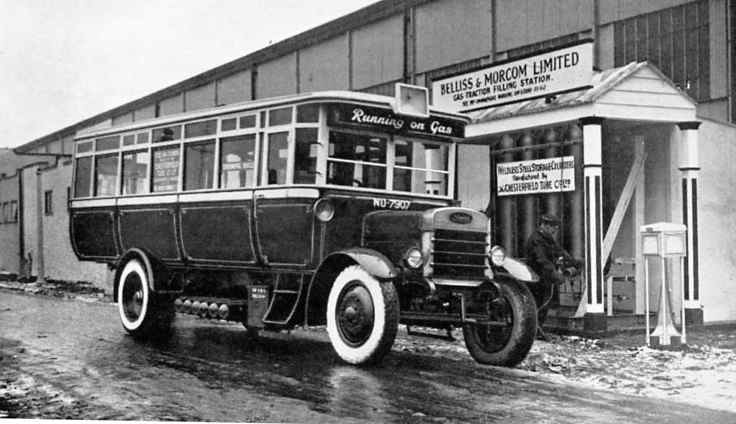
1933 So-called ‘Roman stone’ discovered at Tapton. Then believed to be part of ‘an old Roman milestone or direction post’. [This does not appear to have survived but it is probably neither Roman, nor a form of milestone, or directional aid].
1933 Parish church tower surrounded by scaffolding as part of £2,000 repair scheme launched earlier in the year.
1933 Death of Mr Fred Davis, Chesterfield, aged 55 and father of Joe Davies, snooker champion. The latter had won the Snooker Championship Cup for the seventh successive time earlier in the year.
1933 Great shortage of water in Derbyshire villages reported at the beginning of September. Many fires occurred including at Hardwick Wood and Brearley Wood, Sheepbridge.
1933 New ‘high speed vehicle’ acquired by borough police force.
1933 Grassmoor Colliery disaster – 14 men killed in gas explosion.
1933 Undertakings of Chesterfield and Bolsover councils taken over by the Chesterfield and Bolsover Water Board on 1 April.
1934 Victoria Schools on Vicar Lane demolished to make way for a new bus stand.
1934 New police station opened.
1934 Tapton golf course opened.
1934 First broadcast from Chesterfield Parish Church.
1934 Chesterfield Brewery Company (which included TP Wood’s wine and spirit merchants) taken over by Mansfield Brewery for around half a million pounds.
1935 Chesterfield first town in the country to show film as part of evidence in betting cases.
1935 Library in Stephenson Memorial Hall transferred into the part of building on the corner of St Mary’s Gate and Church.
GEORGE VI
1936 New offices [on New Beetwell Street] and depot opened for Chesterfield and Bolsover Water Board. [The offices were later used as a registrars’ office].
1936 Children’s library opened in the Stephenson Memorial Hall that was formerly the old reading room.
1936 Roman Catholic Church of the Annunciation further renovated.
1936 Regal cinema opened on Cavendish Street. This street saw many changes during the year including widening at the corner of Knifesmithgate and at the corner of Saltergate. The Blue Bell inn was rebuilt as part of this improvement scheme.
1936 Death of Sir Ernest Shentall, Mayor of Chesterfield six times.
1936 Chesterfield FC’s new stand opened.
1937 Chesterfield’s first Municipal and Industrial exhibition.
1937 The Daughters of Devine Charity convent established in the Catholic schools on Newbold Road.
1938 New Chesterfield Rural District Council offices opened on Saltergate at a cost of £21,000. A few weeks later (April 6) Chesterfield’s new Town Hall opened at a cost of £146,500.
1938 Explosion at Markham colliery resulting in the death of 79 men.
1938 Last trolley bus runs – replaced by double and single decker motor vehicles.
1938 Extensions to Chesterfield Tube Works opened.
1939 Centenary celebrations of Robinson and Sons. Eight special trains convey 4,000 employees and staff to London.
1939 Brambling House open-air school opened [but requisitioned shortly after war declared].
1939 Shentall Gardens (in front of Chesterfield Town Hall) opened.
1939 Adult lending and reference libraries transferred to the ground floor of the Stephenson Memorial Hall building. Takes over area used as a council chamber and committee rooms by the corporation – vacated following opening of the new Town Hall.
1939 Building work at the Cross Street Catholic schools enabled the juniors and a new nursery department to be accommodated there.
1940 Chesterfield Grammar School came under the jurisdiction of the county council.
1940 Cinemas in Chesterfield allowed to open on Sundays.
1941 Chesterfield reconstructed police headquarters officially opened.
1943 Newbold Estate formerly owned by Lieut-Col Orange Bromehead sold to Metropolitan Railway Country Estates Ltd for £16,300, later purchased by Chesterfield Corporation for £13,050.
1944 A new central altar in the parish church erected beneath the tower (the All Saints’ altar). Choir stalls moved into their present position at the same time. (A permanent stone alter was not installed until 1948).
1946 Joe Davis, World Snooker Champion since 1927 retired from the Championship.
1947 Chesterfield Parish Church bells restored, including a recast. They were lowered eight feet and rehung in a steel frame. The bells were now able to be rung for the first time since around 1932.
1947 New east window in the parish church unveiled. It replaced a window of 1843, which was removed during the war ostensibly for safe-keeping.
1947 Longest drought in Derbyshire since 1887 – 30 days without rain.
1948 Centenary of George Stephenson’s death marked by series of exhibitions and commemorations in Chesterfield, including a railway exhibition at the Market Place Station.
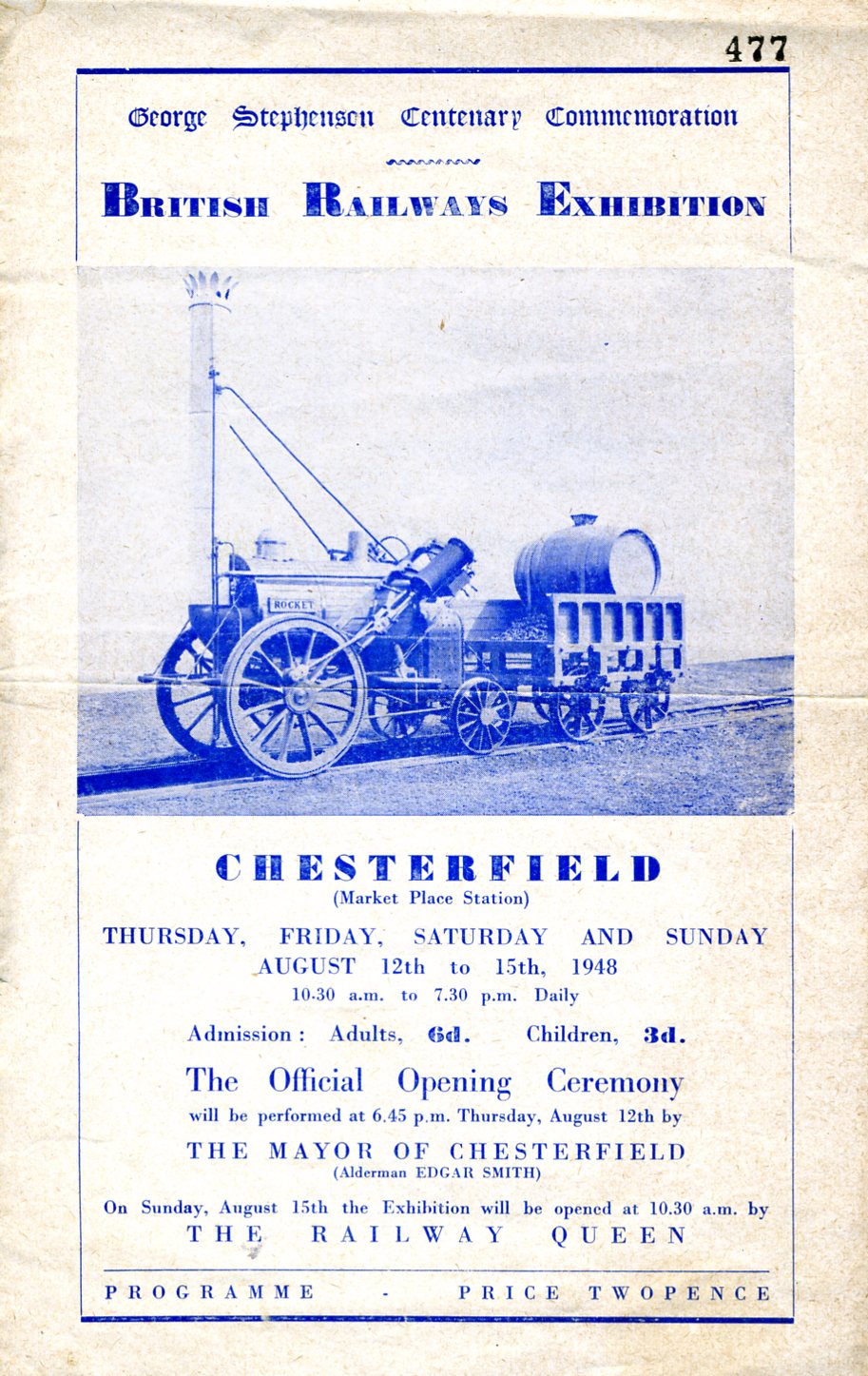
1949 Ringwood Park purchased by Staveley Urban District Council.
1949 Chesterfield Civic Theatre opened – the first repertory theatre in the country. Later known as the Pomegranate Theatre.
1950 Chesterfield Technical College new extension opened – ‘East Block’.
1950 Creswell Colliery disaster – 80 miners killed – the county’s worst pit disaster.
1950-52 Repairs to Chesterfield parish church steeple at a cost of over £2,000.
1951 Last passenger train to Chesterfield Market Place Station (December) the former headquarters of the Lancashire, Derbyshire and East Coast Railway.
ELIZABETH II
1952 Violet Markham first woman Freeman of Chesterfield.
1952 (May 3) Consecration of the nave of SS Augustine, Derby Road.
1954 Dunston County Primary School opened – Chesterfield’s first post Second World School.
1954 Chesterfield’s war memorial unveiled, opposite the main entrance to of the Town Hall.
1955 Chairman’s badge of office presented to Chesterfield Rural District Council to mark its 60th anniversary.
1955 Chesterfield Hippodrome, Corporation Street closed. Subsequently bought by Ernest Lister for more than £20,000.
1955 Preliminary details of a Chesterfield town plan unveiled by the county council. Included were an inner bypass tunnelling under Corporation Street to Infirmary Road; central bus station terraced on falling ground east of the parish church, closure of part of St Mary’s Gate to enable enhancement of the eastern front to the church.
1955 St Andrew’s Presbyterian Church opened in Newbold – first permanent site of the Presbyterians in the town.
1955 Railway line to the Chesterfield Market Place station closed to all traffic with all stations closed between Shirebrook and Lincoln.
1956 Chesterfield Patent Coat of Arms granted. The borough’s first coat of arms.
1956 Surviving horse drawn tram presented to the British Transport Commission for inclusion in the Museum of British Transport. [This tram now resides at the Crich Tramway Museum].
1956 Eastwood memorial hall, attached to the Chesterfield Congregational Church, Rose Hill, opened. Cost £28,000.
1956 YMCA centre at Holywell Cross opened.
1956 The National Coal Board’s Avenue Carbonisation Plant at Wingerworth opened. Cost £10 million.
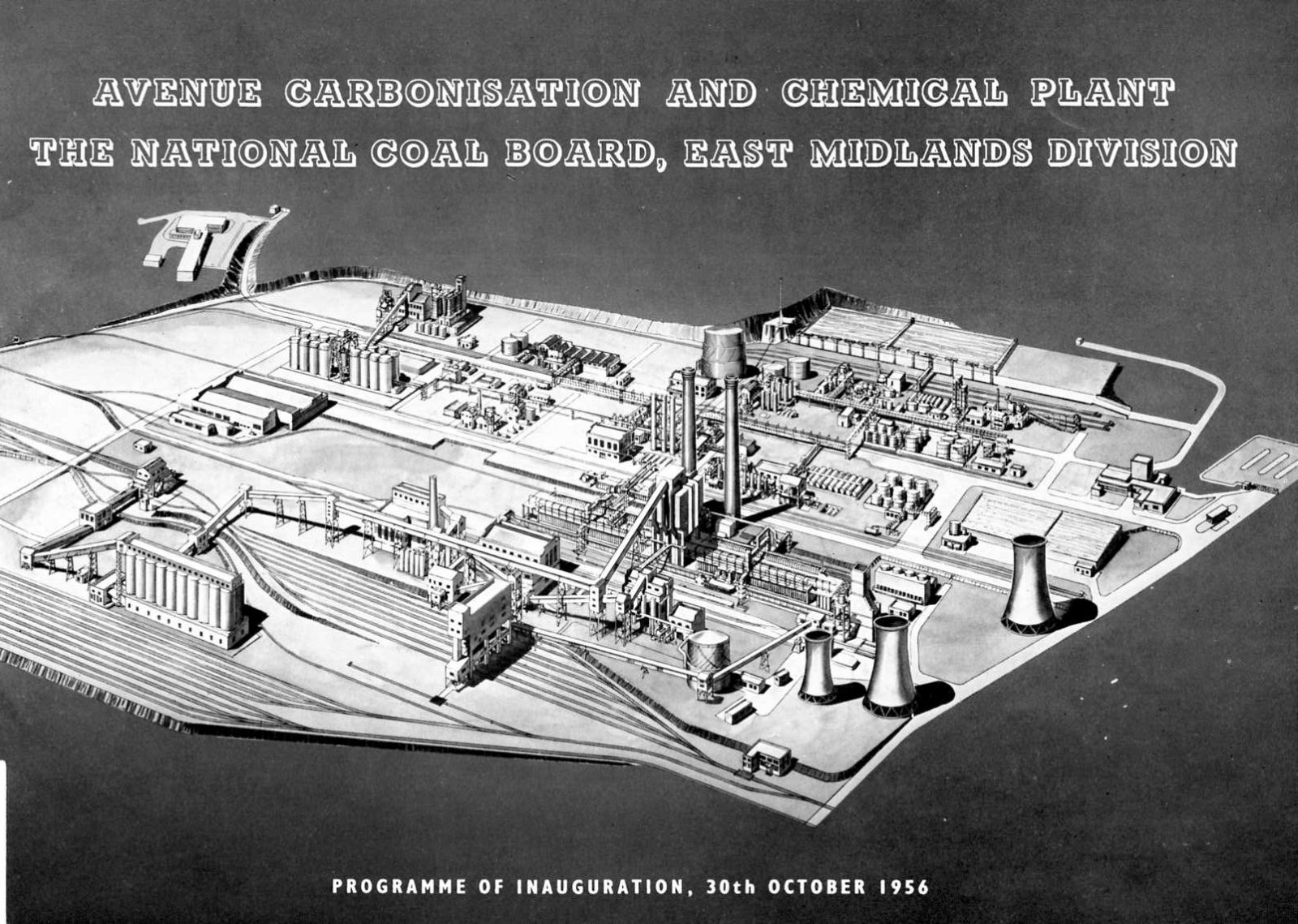
1957 National Coal Board Grassmoor Training Centre opened. Cost £77,000.
1957 Mineral and Goods Dept. closed at Market Place Station.
1957 New Scouts’ headquarters opened in Marsden Place, off Newbold Road.
1957 Newbold Green secondary school opened. Cost £139,000.
1957 Hardwick Hall, contents and some of the park to be accepted in lieu of death duties, by the government.
1957 New Chesterfield fire station opened on Sheffield Road by the county council – cost £74,000.
1957 Coliseum Cinema, Chatsworth Road closed. It opened in October 1907 and claimed to be the oldest existing cinema in the country.
1957 The Chesterfield Settlement, founded by Violet Markham, closed after 55 years.
1957 Victoria Billiards Hall, Knifesmithgate, closed after nearly 50 years.
1958 The Scarsdale Brewery Company – the town’s last remaining brewery – taken over by the Whitbread Co. (Ceased brewing at the beginning of 1959). Dated back over 150 years.
1958 Edwin Swale School, Whittington, opened. Was then Chesterfield’s 13th and newest secondary school. It had cost £180,400.
1958 Ashgate Road ‘mentally handicapped children’s training centre’ opened at a cost of £23,000.
1958 Nine storey block opened at the College of Technology.
1958 Parish church organ reconstructed at a cost of £3,500.
1959 Ulverston Road Methodist Church, Newbold, opened.
1959 Edgar Styler Rose Garden – in memory of the late alderman, mayor and chairman of the parks committee for many years – opened in Queen’s Park.
1959 Drought in Chesterfield.
1959 Fun and fireworks held at Prospect Street, Stonegravels to mark condemnation and demolition of the street.
1959 Chesterfield and District Cooperative Society open their remodelled and extended central premises at Elder Way.
1959 Opening of Chesterfield and District Crematorium at Brimington. Cost estimated around £90,000.
1959 Twinning links with Darmstadt begin.
1960 The Devonshire Arms, Holywell Street and 60 Holywell Street, demolished to extend showrooms and workshops of Kennings Ltd ‘Cavendish Motors’
1960 All the pew poppy heads in the parish church’s nave cut off and the pews lightened to look like limed oak. The heads were sold off.
1960 Fire ravaged Bolsover Parish Church.
1960 Barnett Observatory opened at Newbold
1960-1963 Mystery of the ‘Bubble car’ murders in Chesterfield.
1960 Staveley Iron & Chemical Co Ltd and its subsidiaries sold by the government to Stewart and Lloyds Ltd for £6m.The sale included the Sheepbridge Co. Ltd. (taken over by Staveley in 1955) and three small iron ore companies.
1960 Announced that Chesterfield Corporation had purchased the Spa Lane premises of the former Scarsdale Brewery Company.
1961 ‘Bubble car murders’ – carbon copy murder.
1961 Forestry Commission starts replanting Walton Woods laid bare in the 1920s.
1961 The population of Chesterfield according to the census was 67,858.
1961 New premises of the Kenning Motor Group opened in West Street, completed at a cost of £100,000. [They later became the home to Derbyshire County Council’s area social services, after Kennings moved to their ‘Manor Offices’ on Old Road – which had been vacated following the collapse of their intended occupants Messrs Plowwrights Ltd.].
1961 Licence for the Hour Glass Inn, Spa Lane not renewed when licensee fails to attend the annual licensing meeting.
1961 Opening of £25,000 new youth centre in Springbank Road.
1961 The new Dunston Inn at Newbold opened. Replaced two old Mansfield Brewery houses – the other being the former Railway Inn on Tapton Lane.
1961 Newbold C of E, Cranborne Road, officially opened. Built at a cost of about £41,000.
1961 (December 22) Disastrous fire, lasting three hours, gutted the north transept of Chesterfield Parish Church. Most of the organ was also destroyed, along with an ancient ‘Foljambe’ rood screen, with the bells, tower and spire itself threatened. Efforts by the fire service confined the damage, but this was estimated at between £30,000 – £40,000. The fire started in the historic Snetzler organ.
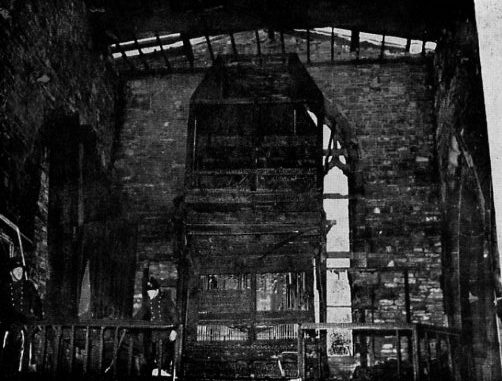
1962 (January 7) Only a few days after the devastating fire at Chesterfield Parish Church, the BBC broadcasts sung Eucharist from the church.
1962 Barker Lane service centre of George Kenning (Chesterfield) Ltd opened, at a cost of £75,000.
1962. £30,000 revamp of Chesterfield Queen’s Park Annexe launched as an ‘Olympic standard sports arena’.
1962 Town council agrees to electrify winding mechanism of the Chesterfield Parish Church clock at a cost estimated at £435.
1962 Ashbrook senior centre opened.
1962 Improvement and modernisation plan at the Mansfield Brewery owned Station Hotel completed with the opening of a ‘richly furnished lounge bar’ called the Edensor Lounge.
1962. Announced that the new courthouses planned for land off West Bars would cost an estimated £195,750.
1962 (9 September) Central altar at Chesterfield Parish Church, damaged in the December 1961 fire, rededicated.
1962 Chesterfield Rugby Club celebrates the opening of its new pitch at Stonegravels. The training area was reseeded and floodlit. Total cost of the improvements was £3,000.
1962 Building land at Errington Road Walton sold for over £4,000 an acre – the highest price paid for land in the northern part of the county.
1962 Road improvements scheme announced by Chesterfield Corporation included an extension to Markham Road.
1962 Marsden Street Methodist Church closes. Congregation will use the schoolroom until a new Methodist Church is erected at Loundsley Green – for which constriction started.
1962 (October 11) Sale of 5,7,9,11 and 13 Cavendish Street and 6,8,10,12 and 14 Stephenson Place owned by Charles Eyre. A London Property and Investment Company purchased for £79,000 – the largest in Chesterfield history. This exceeding by £500, and sale of property in Stephenson Place in 1961.
1962 Brocklehurst Motor Sales Ltd announce they have taken over Jack Boult’s Empire Garage of Sheffield Road at a cost of some £100,000. The two garages faced each other across Sheffield Road. Brocklehurst Motor Sales Ltd were then described as ‘one of the largest dealers in the Midlands’.
1962 Town centre redevelopment plans (the Allen plan), which would have the effect of turning Chesterfield into ‘one big department store’, were announced. There would be a new road pattern for the town, with a ‘modern’ pedestrian shopping area between High Street and New Beetwell Street. The Shambles, Market Hall and the ‘narrow streets’ between Low Pavement and High Street would all have been eradicated in these plans.
1963 On 1 January a start was made on Chesterfield’s new £650,000 bus depot at Stonegravels.
1963 Joe Davis awarded an OBE for his services to sport in the new year honours list.
1963 (January 4) It was announced that 12 stations on the former Great Central Line – including Chesterfield Central [Infirmary Road] and Staveley Central would be closed on Sundays as from 10 March 1963, when all Sunday services on the line between Aylesbury and Sheffield were to be withdrawn. [In the event Chesterfield Central and other stations on the Chesterfield loop and Staveley Central were permanently closed on and from 4 March 1963].
1963 (January 7) Heath and Williamthorpe Co-operative Society taken over by Chesterfield and District Cooperative Society.
1963 (January 8) Further additions to Chesterfield Technical College agreed by Derbyshire County Council. New engineering block, boiler house and entrance link authorised. The need for the college and the College of Art to use premises attached to the the former flour mill on Lorsdmill, Street would still be needed as the county council were to negotiate for a further lease extension of five years. [In the event the college of art used these premises well into the 1980s].
1963 Park Road railway bridge demolished (January 9) after an unsuccessful attempt made to blow it up the previous day.
1963 (January 11) Chesterfield’s last independent cinema, the Lyceum, Whittington Moor, stopped showing film. The premises were taken over by the Carlton Club – a venture which appears to have been launched by the principals of the Lyceum. [The nearby Carlton Club had become a popular entertainment centre at the time].
1963 (January 14) Chesterfield market traders express satisfaction with town centre redevelopment plans after meeting with Chesterfield Corporation.
1963 (January 21) Congregation of Marsden Street Methodist Church allowed to use one of the town’s schools for services.
1963 (January 22) Renewed bid by Chesterfield for County Borough status meets strong opposition from neighbouring authorities. Proposals included taking Staveley, Brimington and Calow into a new enlarged borough.
1963 (February 6) Hopes of a break in the worst winter conditions experienced in the county since 1947 dashed when heavy falls of snow once again hit parts of the country after a brief thaw.
1963 (February 6) Tenants at Newbold and Dunston object to the first major housing zone in the wards to be declared a smoke-control area.
1963 (February 8) Plans for a new Anglican Church at Loundsley Green, by two young Chesterfield architects, selected for an exhibition on new church architecture. They had been branded as ‘too modern’ by some members of the town’s planning committee.
1963 (March 5) Reported that Chesterfield Corporation were to purchase a site for industrial development and an access road at Sheepbridge, from Stewarts & Lloyds Ltd.
1963 (March 20) Announced that ministerial approval given for completion of the new Chesterfield grammar school on Chatsworth Road.
1963 (March 27) Chairman of British Railways Dr Richard Beeching unveils his report into the future of rail transport in the country. Many local services proposed to be axed including the closure of all local stations on the line between Chesterfield to Derby, Nottingham and Sheffield.
1963 (April 12) Announced that a maternity block of some 200 beds would be one of the early features of Chesterfield’s new district general hospital due for completion in 1975 at Ashgate. [The hospital was never built at Ashgate – though an ambulance station was! It’s thought that a site nearer to the then newly opening M1 motorway lead to a rethink on the site – which eventually opened in the 1980s at Calow].
1963 (April 27) Foundation stone of the new Methodist church at Loundsley Green laid.
1963 (27 May) The new Accountant General’s Department headquarters in West Bars opened. Employs: about 700 local people in addition to 800 civil servants from Bickley, London and Harrogate. At opening the building has only a skeleton staff ‘to set things in motion’.
1963 (May 29) Presentation made to retiring Archdeacon of Chesterfield (Ven T. Dilworth-Harrison after 29 years in the town (as Vicar of Chesterfield). [He finally retired in July. In April he had revealed that he was retiring to become the Vicar of Edingley with Halam, near Newark].
1963 (May 31) Death of Miss Susie Blanche Eastwood, Brambling Cottage, Hady Hill. [A generous benefactor to the town, she was a member of Eastwood family, formerly dominant in local affairs. When her will was published on August 2 it revealed that she was the richest woman in Chesterfield, leaving more than three-quarters of a million pounds].
1963 (June 30) Dedication of new organ at Chesterfield Parish Church.
1963 (September 21) Derwent House at Newbold opened as a residential home for elderly and disabled people countywide. Cost £118,300. Is the 15th residential home to be provided by the County Welfare Committee since 1948.
1963 (October 1) Chesterfield council sanctioned the use of all the land at the rear of the Town Hall for use as car parking [a function which it still fulfils].
1963 (October 18) Announced that Chesterfield’s new AGD headquarters to be named ‘Chetwynd House’ in honour of the postal pioneer who came up with the idea of a depositor’s book for the Post Office Savings Bank..
1963 (October 25) Announced that Chesterfield Corporation ‘one man operated buses’ would be put immediately to work as such when delivered later in the year. [This was the beginning of the end of conductors on corporation buses].
1963 (October 28) The Loundsley Green estate gets its first bus service. [This indicates the growing status of the estate built by Chesterfield Corporation to house staff who had moved to the town to work at the new AGD building].
1963 (June 30) Rededication of the Holy Cross Chapel and other parts of Chesterfield parish church restored following the December 1961 fire. The organ is formerly of Glasgow City Hall. Several of the stops were saved from the the burnt out Schneltzer instrument. A new choir vestry was constructed as part of the works.
1965 New courthouse opened at West Bars to a design by Professor Allen. [The building was regarded a being of a troublesome design from the start. It was converted into apartments in the early 2020s. It is listed grade II].
1974 (April 1) Under the Local Government Act (1972), the Borough of Chesterfield was created which took in the urban district of Staveley and the parish of Brimington from Chesterfield Rural District.
1974 The Olde House, Newbold, converted from an old farmhouse, opened as two bar establishment. A further bar opened in 1975, with a restaurant opening in 1977.
1975 Former Market Place station building of the Lancashire, Derbyshire and East Coast Railway demolished.
1977 Delicenced public house – The Hare and Greyhounds, St Mary’s Gate – for sale by auction on instructions of John Smith’s Tadcaster Brewery Ltd. [The property later became the social centre for the Chesterfield Parish Church, branded as the ‘All Saints Centre].
1978 The Chesterfield & District Athletic Club was formed.
1978 The former Scarsdale Brewery Offices, 42 St Mary’s Gate, for sale by auction. The Grade II listed Georgian premises were by then largely derelict, but had the benefit of grant aid from the county council and the Department of the Environment for renovation, together with planning permission for refurbishment. A previous attempt to market the property in 1976 at offers around £36,000 appear to had failed.
1975 Conservation area based approached adopted by the Borough Council for redevelopment of the town centre.
1981 Pavements Shopping Centre opened as part of the conservation based approach adopted by the borough council to redevelopment of the town centre.
1982 New library opened in Chesterfield town centre by Derbyshire County Council replacing out-dated facilities in the Stephenson Memorial Hall, the Library Lecture Theatre at New Square and the childrens’ library on the first floor of the New Square building. [The New Square building was later converted in the borough council’s revenue hall and customer service contact facility].
1982 The new St Mary’s High School opened in Upper Newbold (a year after its completion).
1983 Chesterfield Swimming Club was founded as Middlecroft Swimming Club. The name was changed in 1988.
1983 (January) The Station Hotel purchased by Abraham Bejerano, who has plans to significantly invest in the business.
1984 First stage of new hospital opened at Calow. Replaces out-dated facilities at the old Royal Hospital site on Holywell Street, which closes.
1984 Chesterfield College of Art and Technology formed after combination of the formerly separate colleges of art and technology.
1985 (July 25) Inner Relief road opened.
1987/1988 Parish church vicarage demolished. The organ at the parish church is restored in this period by Wood of Huddersfield. Four manual console created with new solid state switching introduced. (The organ was dedicated on 15 May 1988)
1988 Abraham Bejerano sells the Chesterfield Hotel, which he had renamed from the Station Hotel, during his ownership.
1988 New chapel of ease built at St Patrick, Catholic chapel, in New Whittington.
1991 Secondary school education re-organised in Chesterfield and north eastern Derbyshire.
1997 (April 13) Chesterfield FC reached the FA Cup Semi-Final.
Click here to access the next and final part of our chronology.

